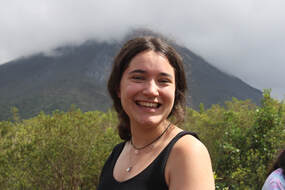KUBantu
Bantu linguistics at the University of Kansas
We are a collaborative research group documenting Bantu languages. We work with the resettled African community in and around the Kansas City area. Our focus has primarily been on the Lacustrine languages (particularly those in Zones JD and JE) spoken around the Great Lakes in East Africa. We have a number of on-going projects looking at theoretical and descriptive issues. Click below to see some of our recent work. Please reach out to John Gluckman (johnglu @ ku.edu) if you'd like access to any work not available through this site.
Predication
Previous work has identified a wide range of morphological, syntactic, and semantics variation in how predication is expressed across Bantu languages.
- Morphological variation in predication strategies. In on-going work, we have been looking at how the languages of JD realize the various types of predicational sentences.
- Gluckman, John, Stephanie Born, Aron Finholt, Jack Foster, and Lucy Ann Whittington. In prep. Nonverbal Predication in Kihavu (JD53).
- Possessive predication. Led by Aron Finholt, this project looks at the parallels between possessive predication and "pure" predication in some Bantu languages.
- Finholt, Aron. 2021. States and Possession in Mashi: Novel Evidence for Decomposing HAVE, presented at the Linguistics Society of America, Washington D.C.
- Finholt, Aron. 2021. Decomposing HAVE: Evidence from Possessive Predication in Mashi, presented at the 52nd meeting of the North East Linguistic Society, Rutgers University.
- Copulas in embedded contexts. In some cases, copular distinctions collapse in embedded environments. Why? This work bridges the investigations of copulas and complementizers below.
- Gluckman, John. To appear. Copulas and Complementizers in Kinyamulenge. DGfS Workshop: Long distance dependencies and the structure of embedded clauses in African languages
COMPLEMENTIZERS
Many Bantu languages have a variety of complementizers used to introduce finite embedded clauses.
- Complementizer meaning. Across East Bantu, there is a variety of ways that a finite embedded clause can be introduced. We have been documenting and analyzing the differences in a few different languages.
- Gluckman, John. 2022. Copulas and Complementizers in Kinyamulenge. DGfS Workshop: Long distance dependencies and the structure of embedded clauses in African languages
- Swahili's complementizer system. Led by Aron Finholt, we have been interested in the ways in which Swahili speakers (particular Tanzanian Swahili speakers) utilize the complementizers kwamba and kuwa to introduce an embedded clause. Using both corpus data and speaker judgments, we find that the complementizer differ in subtle "evidential" ways.
- Finholt, Aron, and Gluckman, John. Accepted. A Corpus Analysis of Swahili's Dual Complementizer System.
- Finholt, Aron. 2021. Attitude Reports and Relative Belief: A New Perspective on the Swahili Dual-Complementizer System. MA Thesis
CAUSAL CLAUSES
Typologically, subordinators that introduce reason-clauses and purpose-clauses. We've been exploring both the meanings underlying different types of causal clauses, and the typological distribution of causal clauses within Bantu languages.
- Gluckman, John, and Finholt, Aron. 2021. Reason and Result in Kinyamulenge. Presented at TripleA 8 at the National University of Singapore. June 25, 2021.
- Gluckman, John, and Finholt, Aron. Under review. A Preliminary Typology of Causal Clauses in Bantu Languages.
Narratives
We are in the process of collecting narrative texts which we will use to create open access materials for community members. Stayed tuned!
Collaborators
|
|
Aron Finholt, PhD student in Linguistics
My research operates primarily within the interfaces between syntax, semantics, and morphology, with a special focus on the Lacustrine family of Bantu languages in East Africa. Current areas of particular interest to me include the morphosyntactic expression and semantic function of complementizers, as well as typological variation in predication strategies. |
|
Alexandra Koran, MA student in AAAS
My research is concerned with the importance of Kiswahili dialects, specifically those spoken in Eastern DRC and Rwanda, in translation and interpretation interventions. I am also interested in language contact and variation, language and borders, linguistic isolation, and the concept of language rights as human rights. |





